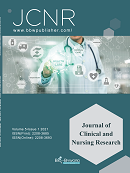Abstract
Objective: To explore the law of birth and yang deficiency constitution based on the theory of five movements and six qi, as well as to provide a new way to better realize the prevention of yang deficiency constitution. Methods: The data of TCM quality table and luck data were collected via questionnaires. According to the data of from the TCM quality table, the respondents were divided into yang deficiency constitution group and non-yang deficiency group. According to the luck data, the distributions of gestational age were compared between the two groups. Results: A total of 175 questionnaires were collected, of which 89 were non-yang deficiency constitution and 86 were yang deficiency constitution. The proportion of Ding year (15.1%) in the yang deficiency group was significantly higher than that in non-yang deficiency group (5.6%), in which the difference was statistically significant (P < 0.05). Conclusion: The possibility of yang deficiency constitution is higher.
References
Li L, Xue XL, Xu WJ, et al., 2008, Application of the Idea of “Treating Disease Without Disease” in the Prevention and Treatment of Subhealth. Beijing Traditional Chinese Medicine, 01: 76-77.
Yan S, 2017, Yang Deficiency Constitution is the Most in Sub-Health People. Care Times.
Xue LF, 2010, Clinical Investigation and Study on the Influence of Gasification Law on Children’s Innate Constitution. Journal of Shandong University of Traditional Chinese Medicine, 3: 223-225.
Chinese Society of Traditional Chinese Medicine, 2009, Classification and Judgment of TCM Physique, China Traditional Chinese Medicine Press, China, 303-304.
Wang Q, 1995, Traditional Chinese Medical Constitution, China Medical Science and Technology Press, China.
Xu ZH, 2009, A Brief Discussion on the Significance of Chongyang Qi in Sub-health Treatment. Journal of Chengdu University of Traditional Chinese Medicine, 02: 18-19, 38.
Wang QQ, Li K, Zhu L, et al., 2017, Investigation and Analysis of TCM Physique in 528 Patients with Malignant Tumor. Xinjiang Traditional Chinese Medicine, 02: 68-70.
Zhang XN, Wang X, Wang M, et al., 2010, Epidemiological Investigation of TCM Physique Types in 355 Cancer Patients. Chinese Journal of Traditional Chinese Medicine, 5: 13-16.
Zuo WY, Ding HJ, Pu BH, 2017, Identification of Traditional Chinese Medicine Physique in a Community of High Blood Pressure. Shanghai Jilin traditional Chinese Medicine, 1: 36-41.
Huang JY, 2017, A Study on the Investigation and Intervention of Traditional Chinese Medicine Physique in Rural Elderly Experiencers. Chinese Community Physicians, 11: 150-151.
Chen GZ, Zhou YM, Yao ZC, 2016, Investigation and Analysis of Traditional Chinese Medicine Physique of Elderly Community in Longgang District, Shenzhen City China. New Chinese Medicine, 2: 108-112.
Deng JC, Zheng XW, Chen SH, et al., 2018, Distribution Characteristics of TCM Physique in Slowing Period of Bronchial Asthma. Chinese Journal of Traditional Chinese Medicine, 3: 945-947.
Du YH, Liu HY, Ma WX, et al., 2019, Investigation and Study on TCM Physique Type and TCM Syndromes of 572 Cases of Bronchial Asthma Treated Period. World Journal of Integrated Chinese and Western Medicine, 2: 78-81.
Xu ZY, Wang L, Wang L, et al., 2016, Chinese Medicine Syndrome Study on Diabetes Complicated with Osteoporosis in Yanji Community, Shanghai, China. Journal of Liaoning University of Traditional Chinese Medicine, 11: 100-103.
Wan L, Huang HX, Deng WM, et al., 2019, Investigation and Analysis on Bone Density, TCM Syndrome Type and Influencing Factors of Osteoporosis in Middle-aged and Elderly Women in Guangdong Province. Journal of Osteoporosis in Chinese Medicine, 1: 107-112.
Shen JH, Yang HW, Yang JW, et al., 2016, Investigation on the Correlation between TCM Constitution Type and Infertility Syndrome Type. The Light of Traditional Chinese Medicine, 3: 322-324.
